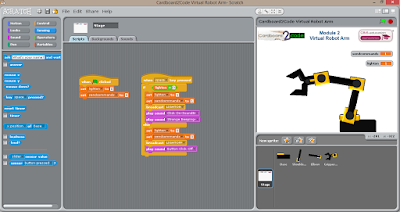Sameer Kumar Shrestha, Northampton
The report presents the dissertation on title Prototype of Sentry Robots for Advanced Security which includes the use of LEGO robots showing interaction between each other with the help of wireless communication medium in Bluetooth. The purpose of the work is to build a communication between multiple LEGO robots using the wireless technology. For this task, the NXT version of LEGO Mindstorms has been selected. It is because there is need of complex communication which is possible through wireless medium such as Bluetooth and also a suitable processing device for the proposed task which is present in the LEGO Mindstorms NXT. The report has also focused on the background information about the NXT system and its great flexibility with LeJOS NXJ as the programming platform. The outcome is the implementation of developed work with the use LEGO Mindstorms NXT and the LeJOS NXJ as programming platform. The task was approached with one LEGO NXT robot maintaining the distance between the object in the environment and searching the object by rotating in case of lost. After the completion of the first task, the next task was to study the communication behavior of multiple robots communicating with each other to fulfill the same job. For this, three NXT robots were taken and programmed in such a way that they form the shape of triangle and keep tracking the object. All three of them send and wait for the information from each other and process this information to produce a suitable output, i.e. to respond to the action from each other. Thus, it was found that the implementation of several processes to multiple LEGO based communication had faults, due to the technical hitches with the communication technology and limitations of the NXT systems.
All opinions in this blog are the Author's and should not in any way be seen as reflecting the views of any organisation the Author has any association with.








